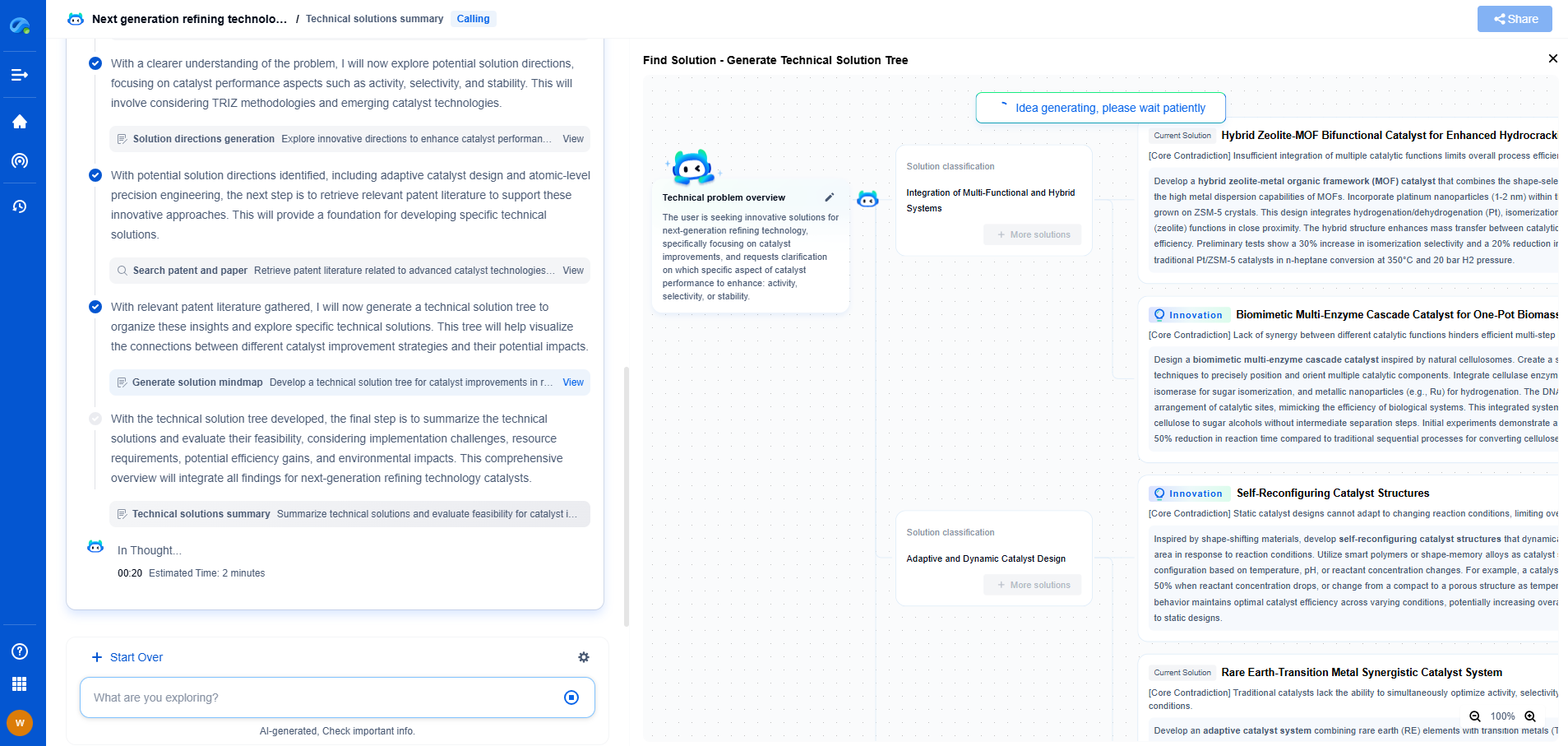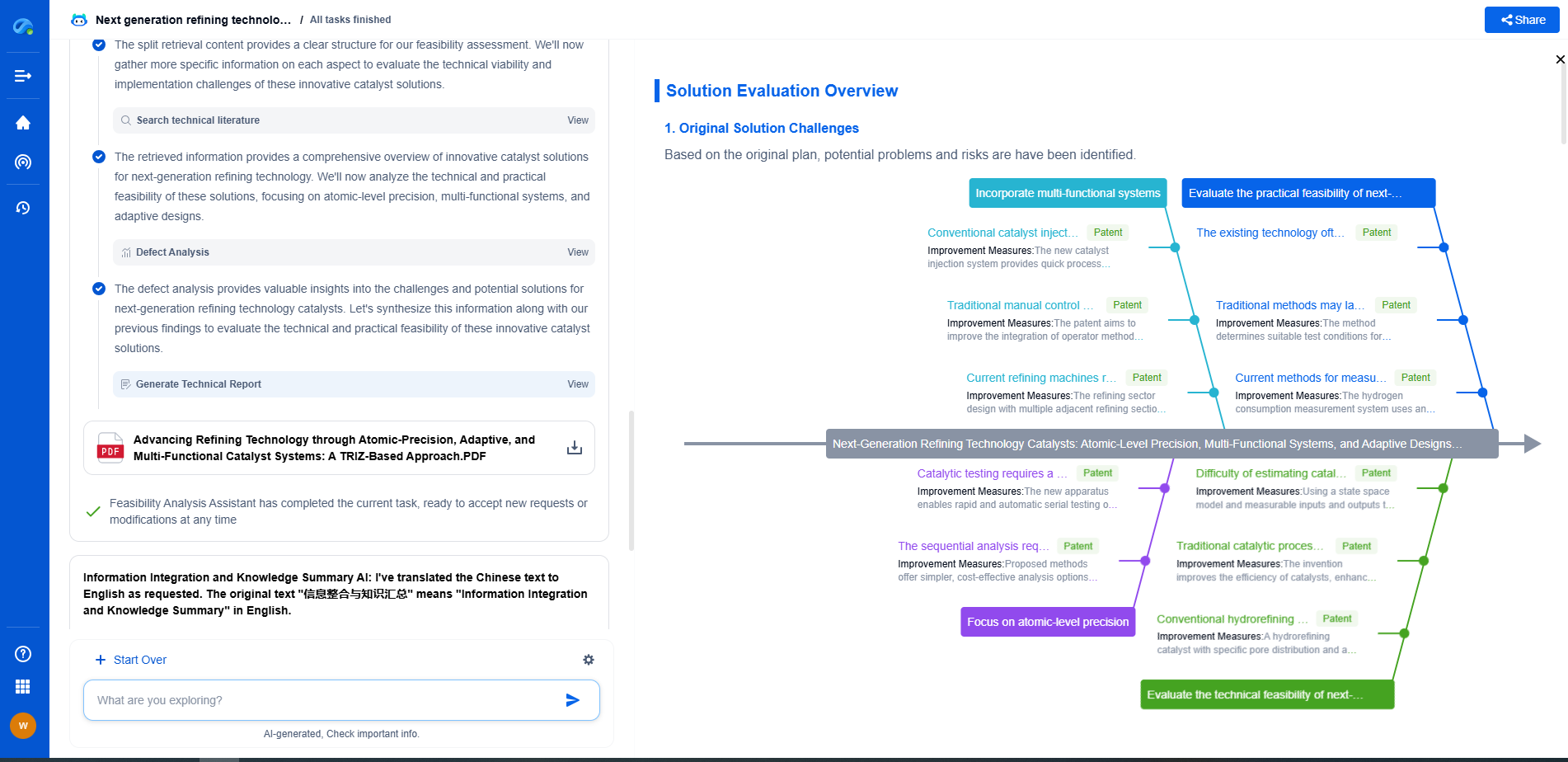Interpreting RF Benchmark Results: From RSSI to Throughput
JUL 7, 2025 |
Radio Frequency (RF) benchmarking is a critical aspect of evaluating wireless network performance, providing insights into various parameters that affect the quality and efficiency of communication. To make the most of RF benchmarking, it's essential to understand the key metrics involved, including RSSI, noise levels, and throughput.
RSSI: The Signal Strength Indicator
Received Signal Strength Indicator (RSSI) is one of the primary metrics used in RF benchmarking. It measures the power level that a wireless device receives from a signal. Typically expressed in decibels (dBm), RSSI helps determine the quality of the signal being received. A higher RSSI indicates a stronger signal, which is generally preferred as it implies a more robust and reliable connection.
However, interpreting RSSI is not always straightforward. While a high RSSI value is often desirable, it must be viewed in conjunction with other metrics. Factors such as interference, network congestion, and environmental conditions can impact the effective use of a strong RSSI.
Noise Levels: Identifying Interference
In the context of RF benchmarking, noise refers to unwanted signals that interfere with the desired signal. High noise levels can degrade the quality of the wireless connection, leading to packet loss and reduced throughput. Identifying and minimizing noise is crucial for maintaining optimal network performance.
Noise levels are typically measured in dBm, similar to RSSI. A negative dBm value closer to zero indicates higher noise, which is less desirable. The signal-to-noise ratio (SNR) can be used to assess the impact of noise on network performance. A higher SNR value suggests a better-quality connection, as it indicates a stronger signal relative to noise.
Throughput: The Ultimate Performance Measure
While RSSI and noise levels provide insights into signal quality, throughput is the final metric that determines the actual performance of a wireless network. Throughput measures the rate at which data is successfully transmitted over the network, usually expressed in bits per second (bps).
Several factors can influence throughput, including signal quality, network congestion, and protocol overhead. Even with a strong RSSI and low noise levels, throughput can still be limited by these factors. Therefore, a comprehensive RF benchmark analysis should always include throughput measurements to verify the effective capacity of the network.
Correlating RSSI, Noise, and Throughput
When interpreting RF benchmark results, it's crucial to understand how RSSI, noise, and throughput are interrelated. High RSSI with low noise generally leads to higher throughput, as the signal is strong and less susceptible to interference. Conversely, a low RSSI or high noise can significantly reduce throughput, even if other conditions are favorable.
Additionally, it's important to consider the specific environment and use cases when analyzing these metrics. For example, a network in a densely populated area may experience more interference, resulting in higher noise levels and reduced throughput, despite a strong RSSI. Understanding these dynamics can help in making informed decisions for network optimization.
Practical Strategies for Network Optimization
To optimize network performance based on RF benchmark results, several strategies can be employed. Firstly, enhancing signal strength through better placement of access points or using signal boosters can improve RSSI. Secondly, minimizing interference by selecting less congested frequency channels or using advanced technologies such as beamforming can reduce noise levels. Lastly, optimizing network configurations and managing traffic efficiently can enhance throughput, ensuring that the network operates at its maximum potential.
Conclusion
Interpreting RF benchmark results is essential for understanding and optimizing wireless network performance. By analyzing key metrics like RSSI, noise levels, and throughput, network administrators can identify areas for improvement and implement strategies to enhance connectivity. Armed with this knowledge, it becomes possible to deliver a more reliable and efficient wireless experience.
Empower Your Wireless Innovation with Patsnap Eureka
From 5G NR slicing to AI-driven RRM, today’s wireless communication networks are defined by unprecedented complexity and innovation velocity. Whether you’re optimizing handover reliability in ultra-dense networks, exploring mmWave propagation challenges, or analyzing patents for O-RAN interfaces, speed and precision in your R&D and IP workflows are more critical than ever.
Patsnap Eureka, our intelligent AI assistant built for R&D professionals in high-tech sectors, empowers you with real-time expert-level analysis, technology roadmap exploration, and strategic mapping of core patents—all within a seamless, user-friendly interface.
Whether you work in network architecture, protocol design, antenna systems, or spectrum engineering, Patsnap Eureka brings you the intelligence to make faster decisions, uncover novel ideas, and protect what’s next.
🚀 Try Patsnap Eureka today and see how it accelerates wireless communication R&D—one intelligent insight at a time.
- R&D
- Intellectual Property
- Life Sciences
- Materials
- Tech Scout
- Unparalleled Data Quality
- Higher Quality Content
- 60% Fewer Hallucinations
Browse by: Latest US Patents, China's latest patents, Technical Efficacy Thesaurus, Application Domain, Technology Topic, Popular Technical Reports.
© 2025 PatSnap. All rights reserved.Legal|Privacy policy|Modern Slavery Act Transparency Statement|Sitemap|About US| Contact US: help@patsnap.com

